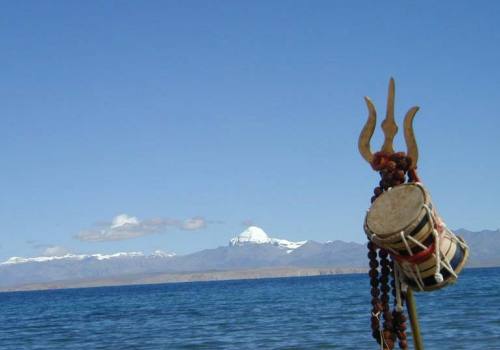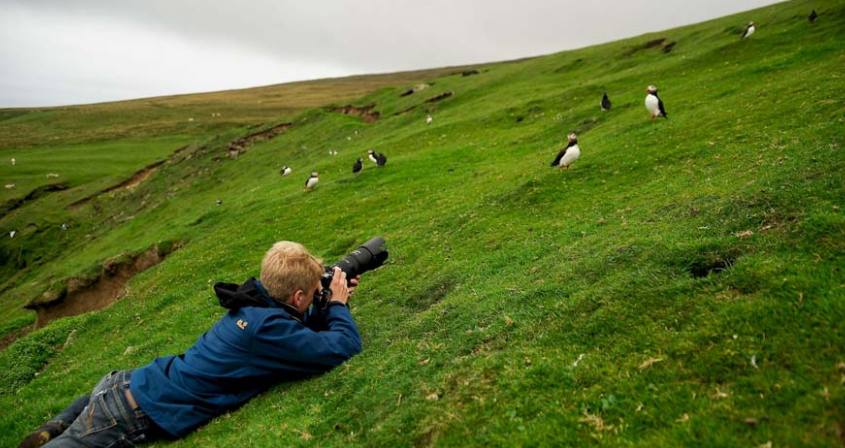Bird Watching Tour in Nepal
About Trip -
Bird Watching Tour in Nepal with Pink Mountain Treks and Expedition will cover major bird watching sites in Nepal. Bird Watching Tour in Nepal Starting from Kathmandu, the tour reaches Bardia National Park of mid-Western part of Nepal and it drives through plains of Terai to Chitwan National Park in Mid Nepal and to Koshi Tappu in the East of Nepal. It is relaxed and slow paced tours offering diverse species of bird sighting, as well as various language speaking groups of people and their cultures enroute. The drive from Bardia to Chitwan grants interesting sightings of Vultures in Dang and in Nawal Parasi to the ethnic Tharu village of Nepal. Then from Chitwan to Koshi, too, offers beautiful birds sighting by the bank of Rapti River enroute. The tours are best during the winter. Apart from outlined itinerary, we tailor your birding tours as per the sites of your interests. Some have chosen Bardia National park, while the others choose to go for Chitwan or Koshi Tappu. The following are the major birding tour sites recommended by Nepal Birding Holidays:
Chitwan National Park
The Chitwan valley consists of tropical and subtropical forests. Sal forests cover 70 percent of the park. Sal leaves are used locally for plates in festivals and religious offerings. Grasslands cover 20 percent of the park. There are more than 50 different types of grasses, including the elephant grass.
The Chitwan National Park is home of more than 50 mammal species, over 567 birds, and 55 amphibians and reptiles. The endangered fauna found in the park are: One-horned Rhinoceros, Gaur. Royal Bengal Tiger, Wild Elephant, Antelopes, Pangolin, Golden Monitor Lizard, Python. The Park has four natural lakes, ponds and Rapti River inhabiting various species of birds such as Purple Swamphen, Darter, Heron, Black Stork. Its grassland is popular habitat for species such as Lesser and Bengal Floricans, as the forest is habitat for Giant Hornbill, Peacock, Owls, Eagles, Babblers, Warblers, Cuckoos, Orioles, woodpeckers.
The park has a range of climatic seasons each offering a unique experience. October through February with average temperatures of 25oC, offer an enjoyable climate. From March to June temperatures can reach as high as 43oC, the hot humid days give way to the monsoon season that typically lasts from late June until September, Rivers become flooded and roads are impossible.
In late January, local villagers are allowed to cut thatch grasses to meet their needs, which offer a better viewing of wildlife to visitors. September – November, February and April, migratory birds join the residential birds and create spectacular bird watching opportunities. While the monsoon rains bring lush vegetation, most trees flower in late winter. The palash tree, known as the "flame of the forest' and silk cotton tree have spectacular crimson flowers that can be seen from a distance.
Bardia National Park
Bardia National park is the largest national park in the lowland Terai. Covering an area of 968 sq.km, the park holds more than 350 species of birds. The park, situated in Nepal's Western Terai, was established to protect representative ecosystems and conserve tiger and its prey species. Initially, a small area was gazetted as the Karnali Wildlife Reserve in 1976. In 1997, an area of 327 km2 surrounding the park was declared as a buffer zone, which consists of forests and private lands. The park and local communities jointly manage the buffer zone which is popular for residential bird Slaty Woodpeckers. Karnali River is the suitable home for Gangetic dolphin and Black Storks, Darters, Pratincols, Lesser Florican. And two majors lakes are situated 1hr drive from the park inhabits Grey Headed and Lesser Fish Eagles, Osprey, Purple Heron, Darters, Swamphen and Coot etc. The park is also home to endangered animals such as the Royal Bengal tiger, wild elephant, Greater one-horned rhinoceros, swamp deer, and black buck.
Koshi Tappu Wildlife Reserve
Koshi Tappu Wildlife Reserve lies on the floodplains of the Sapta Koshi River in the south-eastern Terai. The reserve was gazetted in 1976 to preserve habitat for the only remaining population of Wild buffalo, Arna (Bubalus arnee). The 176 sq. km. reserve is Nepal's smallest wildlife reserve. The eastern and western embankments of the Sapta Koshi River define the area. In 1987, Koshi Tappu was declared a Ramsar site, a wetland of international significance. Government of Nepal has declared the buffer zone (173.5 sq. km) surrounding the reserve in 2004.
The vegetation is mainly composed of tall grasslands. There are also small patches of Accacia and Sisso forest and deciduous mixed Riverine forest. The reserve accommodates varieties of wildlife. The last surviving population of Wild buffalo is found here. The estimated population of wild buffalo is around 159 individuals is dwindling. They are distinguished from domestic buffalo by their much bigger horns. The reserve is also home to around 20 other animal species such as Hog deer , Wild boar , Spotted deer, Blue bull, and Rock Python.
Around 441 species of birds-many seen now here else in Nepal (14 endemic species)- have been recorded, including 20 duck species , 2 Ibis species, white tailed stonechat , Striated marsh warbler, 30 shore birds, 114 water birds, and the endangered swamp partridge and Bengal florican. The Koshi River is home to 80 species of fish. The endangered Gharial crocodile and Gangetic dolphin have been recorded in the river as well.
Outline Itinerary -
Day 01:Arrival in Kathmandu In ternational airport and meet with representative from Pink Mountain Treks and Expedition then transfer to Hotel. Refreshment drink. Hotel Check-In. Trip outline and tour briefing.
Day 02:Fly to Nepalgunj & Drive to Bardiya.
Day 03:Bardia National Park
Day 06:A comfortable birding drive from Bardia National Park to Lumbini, birth place of the Buddha.
Day 07:Lumbini Full Day Birding in the Sacred Garden, Ponds and Wetland.
Day 08:Chitwan National Park:
Day 10:Drive to Pokhara 5hrs.
Day 12:Drive to Kathmandu 6hrs.
Day 13:Fly to Biratnagar.
Day 15:Fly Back to Kathmandu.
Day 16:Shivapuri National Park Birding. Possible sighting:
Day 17:Transfer to Airport.You will be drop to Kathmandu internation airport for your destinational flight by representative of Pink Mountain Treks and Expedition before Three hour of your flight schedule.
Customize TripDetail Itinerary
Day 1Arrival in Kathmandu In ternational airport and meet with representative from Pink Mountain Treks and Expedition then transfer to Hotel. Refreshment drink. Hotel Check-In. Trip outline and tour briefing.
Day 2Fly to Nepalgunj & Drive to Bardiya.Early breakfast and fly to Nepalgunj. Drive to Bardia National Park. Birding on the way- sites: Babai River and Sal-forest. Black Storks, Black Ibis, Woolly-necked Stork, Slaty-Woodpecker, Kingfishers, and Waders and Raptors.
Day 3Bardia National Parkwhole Day Birding in Bardia National Park on Jeep with picnic lunch.
-whole day floating on Raft in Karnali River with picnic lunch.
-drive to Ox-bow lakes for water fowls and other raptors.
Day 6A comfortable birding drive from Bardia National Park to Lumbini, birth place of the Buddha.
Day 7Lumbini Full Day Birding in the Sacred Garden, Ponds and Wetland.
Day 8Chitwan National Park:Drive to Chitwan, birdwatching en route. Vulture Restaurant.The lowland forest and grassland at Chitwan is famous for its wildlife and birds. The elusive Bengal Tiger is the most well-known inhabitant. One-horned Rhinoceros is equally spectacular and rather more reliable, and there is also a chance of seeing Leopard, Sloth Bear, Gaur and Gharial. Jeep safari drives us through two major lakes, Lami Taal and Tamor Taal. And Twenty-thousand lake is an alternative route if the drive is not possible due to high water level in the river.
-Early Breakfast. Whole day drive to Chitwan National Park. Picnic Lunch. Drive back before sunset. Dinner and Tharu Culture Show. Possible sighting: Great Hornbill, Bengal Florican, Siver-eared Mesia, Grey Heahed-fish eagle, Pallas fish eagle, King-fishers, Woodpeckers, Bee-eaters, parakeets etc.
Day 10Drive to Pokhara 5hrs.We leave Chitwan, after breakfast, for Pokhara birdwatching en'route. The hotel we stay in is located at the edge of Phewa Lake. Its garden reflects a botanical feeling, with abundant birdlife. Beautiful Annapurna range can be seen permitting the weather. Yet, Asian Barred Owls, Great Barbets, beautiful Niltavas and various sun-birds will be doing their best to distract you! The forest by the lake accommodates Kalij Pheasant, Puff-throated Babbler and Crimson Sunbird. Green Magpie and the equally wonderful Red-billed Blue Magpie can both be seen in the hotel grounds. Nepal’s only endemic bird, the Spiny Babbler, was seen on our last visit. All our recent trips have yielded Wall creepers wintering along the Seti River. Among the Raptors, Mountain Hawk-Eagle, Bonelli's Eagle, Lesser Spotted Eagle, Steppe Eagle, Shaheen Falcon, and Himalayan Griffon Vulture, Egyptian Vulture, Shikra, Eurasian Griffon, northern sparrow-hawk, Common Kestrel
Day 12Drive to Kathmandu 6hrs.Leave Pokhara early in the morning. Birding en-route: Eurasian Griffon, Red-headed Vulture, Egyptian vulture, and steppe eagle are usually sighted on the way. Hotel check-In in Kathmandu.
Day 13Fly to Biratnagar.Tour to Koshi Tappu Wildlife reserve.The 176 sq. km. reserve is Nepal's smallest wildlife reserve. The eastern and western embankments of the Sapta Koshi River define the area. In 1987, Koshi Tappu was declared a Ramsar site, a wetland of international significance. Government of Nepal has declared the buffer zone (173.5 sq. km) surrounding the reserve in 2004.Around 441 species of birds-many seen now here else in Nepal (14 endemic species)- have been recorded, including 20 duck species , 2 Ibis species, white tailed stonechat , Striated marsh warbler, 30 shore birds, 114 water birds, and the endangered swamp partridge and Bengal florican. The Koshi River is home to 80 species of fish. The endangered Gharial crocodile and Gangetic dolphin have been recorded in the river as well.
Day 15Fly Back to Kathmandu.
Day 16Shivapuri National Park Birding. Possible sighting:Long-tailed Broadbill, Northern Goshawk, Steppe Eagle, Dark-throated Thrush, Yellow-bellied Fantail, Rufus-gorgeted Flycatcher, Orange-flanked bush Robin, Golden bush Robin, Spotted Fork-tail, Green-backed Tit, Striated Laughing-thrush, Rufus-winged Fulvetta, Dark-breasted Rosefinch, Chestnut-bellied Thrush, Red-billed Blue Magpie, streak-breasted Scimitar Babbler, Rusty-cheeked scimitar Babbler, Nepal Fulvetta etc.
Farewell Dinner with Cultural Show.
Day 17Transfer to Airport.You will be drop to Kathmandu internation airport for your destinational flight by representative of Pink Mountain Treks and Expedition before Three hour of your flight schedule.
Trip Map
Fixed Departure

Kailash Mansarovat tour with Pink Mountain Treks and Expedition let you to feel most memorable adventure trip of the life.…
In DetailRelated Trips
- Archeological Tour in Nepal
- Buddhist Circuit in Nepal
- Buddhist Pilgrimage Tour to Kathmandu - Pokhara - Lumbini
- Cultural Tour in Nepal
- Glance of Nepal Tour
- Historical Tour in Nepal
- Extension Tour In Kathmandu
- Kathmandu, Pokhara & Chitwan Luxury Tour
- The Best of Nepal Tour
- Nepal Highlight Tour
- Tour For Nepal Experience
- Hindu and Buddhist Pilgrimage Sites Tour
- Hindu Pilgrimage Tour in Nepal
- Janakpur Tour
- Jungle Safari in Nepal
- Madhesh Terai Tour
- Mushlim Pilgrimage Tour in Nepal
- Short Tour Around Kathmandu Valley
- Short tour in Nepal
- Simraungadh Bariyarpur Tour
- Tour to Madhesh Village of Nepal
- Tour to Most Seeing Places in Nepal
- Yoga and Meditation Tour and Trek in Nepal
